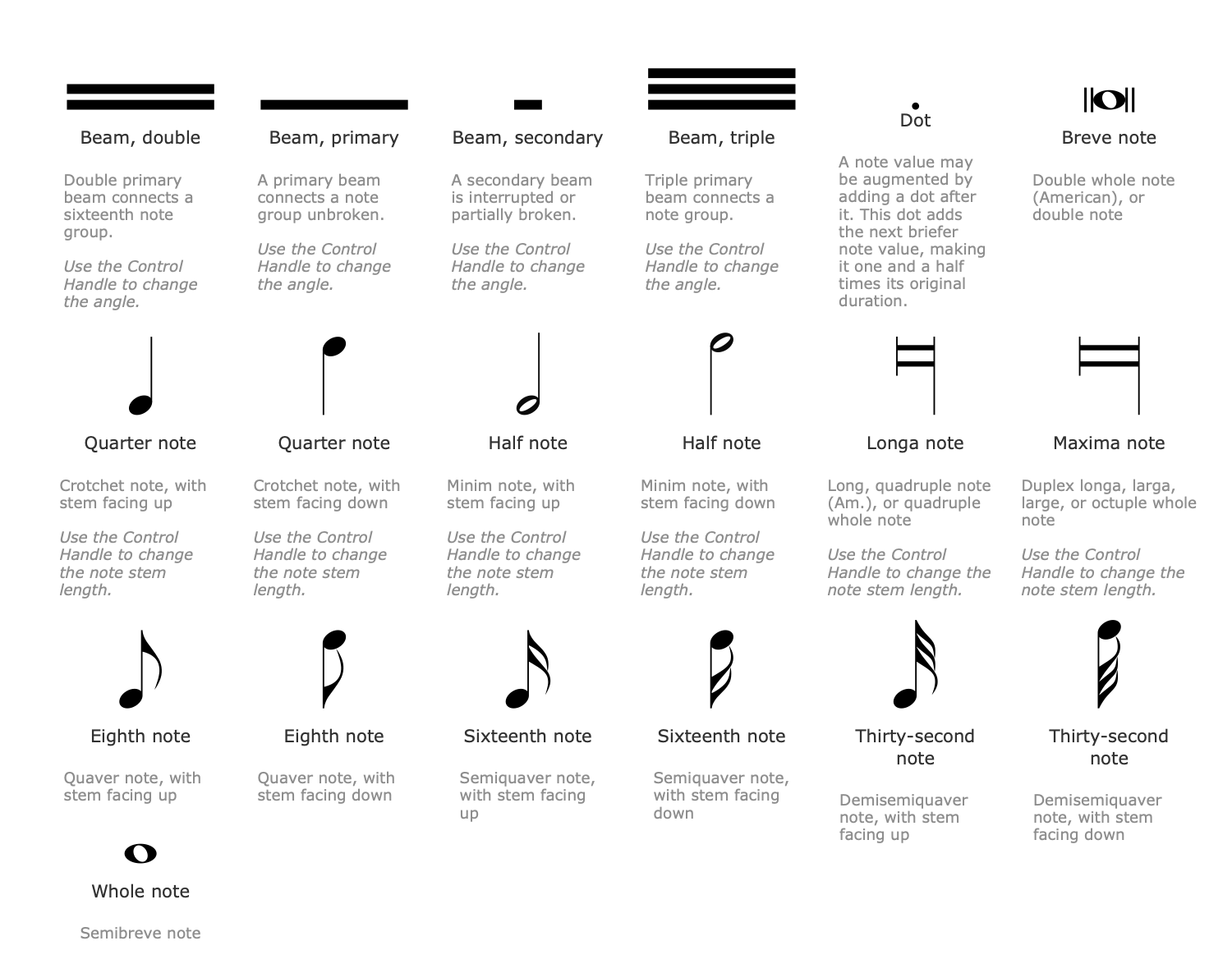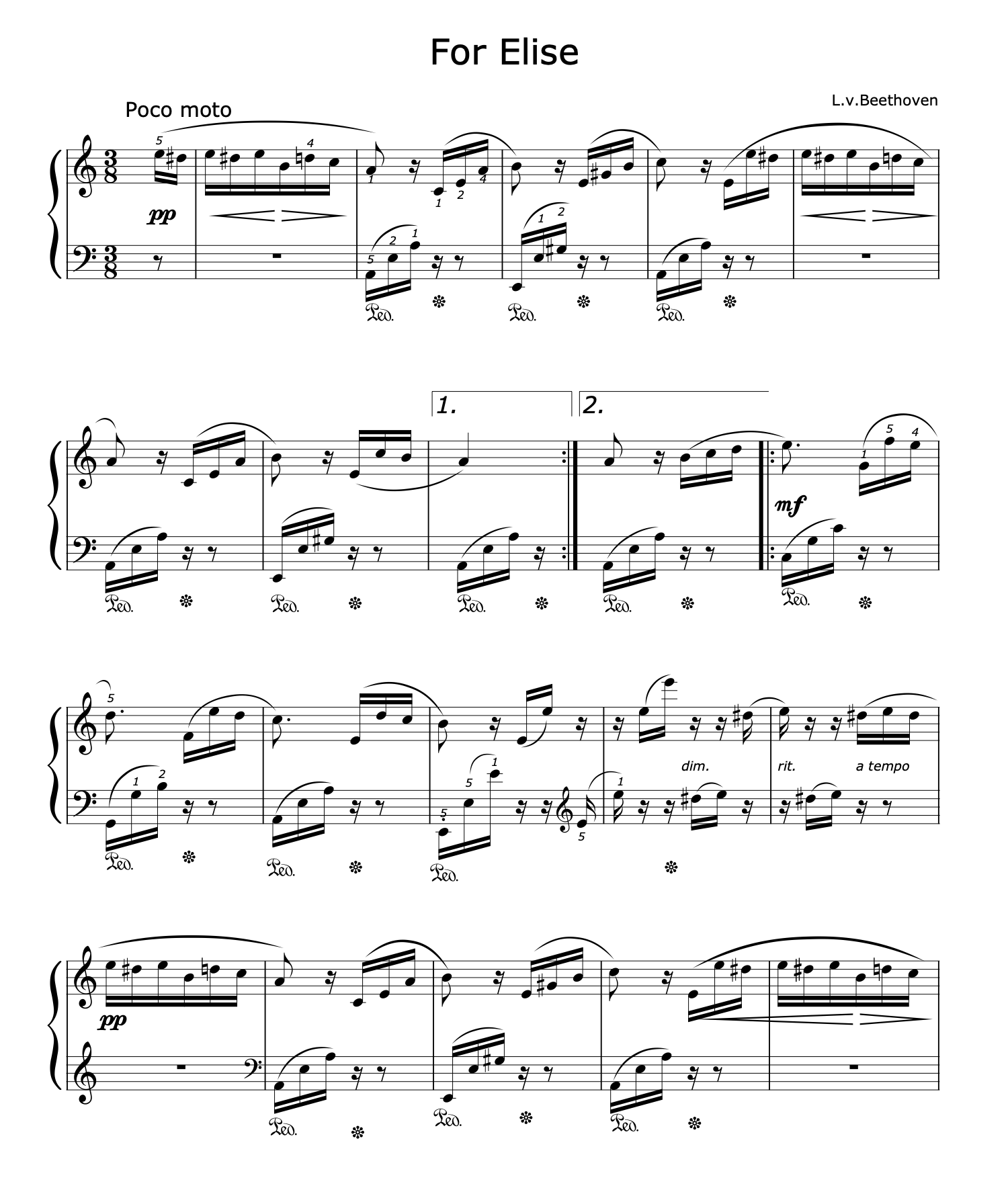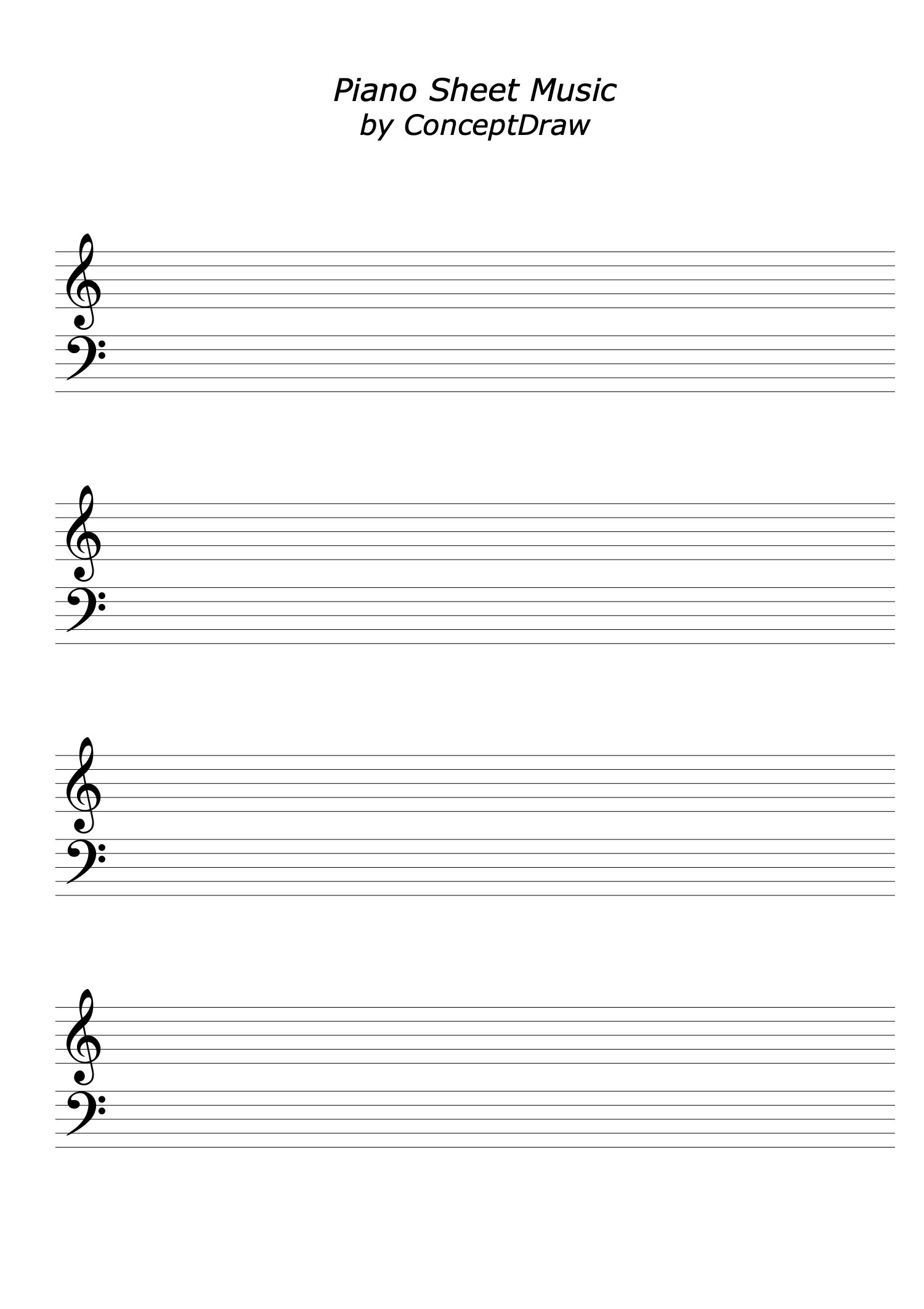Notes Vector Images
Musical notes are the representation of the musical sounds, the building blocks of chords and melodies. Western musical notation of English- and Dutch-speaking regions uses a chromatic scale that includes twelve tones called an octave. These are seven natural musical notes (A, B, C, D, E, F, G) and five sharp notes ( A#, C#, D#, F#, G#) or flat notes (Bb, Db, Eb, Gb, Ab). Each note has a different duration and frequency or pitch of a musical sound in musical notation. Duration is the time that the note is held or played. The pitch describes how high or low a note sounds. Two notes placed next to each other on the piano keyboard differ for a semitone in pitch. This distance in pitch is called an interval.
Sharps and flats are variations of the natural notes and are one half step up and down of them respectively. The sharp and flat notes are called accidentals and correspond to black keys on the piano keyboard depending on scale or key; the regular notes correspond to the white keys. The number of sharps or flats affects the pitch. The next seven notes after the previous seven notes are the same but with double pitch or frequency. Thus, the eighth note has the same name as the first note, but double frequency, etc.
Several European countries, for example, Germany use the designation H instead of B. Most European countries, Arabic- and Persian-speaking countries, also Latin American countries use the solfege naming for notes: Do, Re, Mi, Fa, Sol, La, Si. Indian notation uses the names Sa, Re, Ga, Ma, Pa, Dha, Ni for notes.
Reading music from a music sheet is a great art that musicians possess. It is important because all notes in music should be played correctly, in time, and with a certain rhythm to get the desired melody. Sound is made up of vibrations or waves, which have a speed or frequency of vibration and affect the pitch of the note. The higher the frequency of the wave is, the higher the pitch of the note sounds. Also, one of the most important characteristics of music is its tonality, which is a collection of notes with a certain characteristic of sound. There are two basic tonalities in music: major and minor.

Example 1. Notes Vector Images in Piano Sheet Music Solution
ConceptDraw DIAGRAM charting and vector drawing software enhanced with Piano Sheet Music solution provides a set of libraries with a large collection of vector musical symbols and notes vector images in 12 libraries:
- Notes
- Piano Notation
- Lines Bars Clefs
- Elements Accidentals
- Octave Signs
- Articulation Marks
- Dynamics
- Note Relationships
- Ornaments
- Repetition and Codas
- Rests and Breaks
- Time Signatures
Example 2. For Elise, by Beethoven
Use the predesigned musical symbols and notes images to create music sheets with your own musical compositions or loved pieces of music by famous composers. ConceptDraw DIAGRAM is the best software for both beginners and professional musicians. Once your music sheet is ready, you can simply print it, save in various graphical formats, or share it directly from the application.
Example 3. Piano Sheet Music Template
The piano sheet music samples you see on this page were created in ConceptDraw DIAGRAM software using the drawing tools of the Piano Sheet Music Solution. These examples successfully demonstrate solution's capabilities and the professional results you can achieve using it. An experienced user spent 10-15 minutes creating each of these samples.
Use the powerful tools of the Piano Sheet Music solution to design your own music sheets for piano quick, easy, and effective.
All source documents are vector graphic documents. They are available for reviewing, modifying, or converting to a variety of formats (PDF file, MS PowerPoint, MS Visio, and many other graphic formats) from the ConceptDraw STORE. The Piano Sheet Music Solution is available for ConceptDraw DIAGRAM users.

